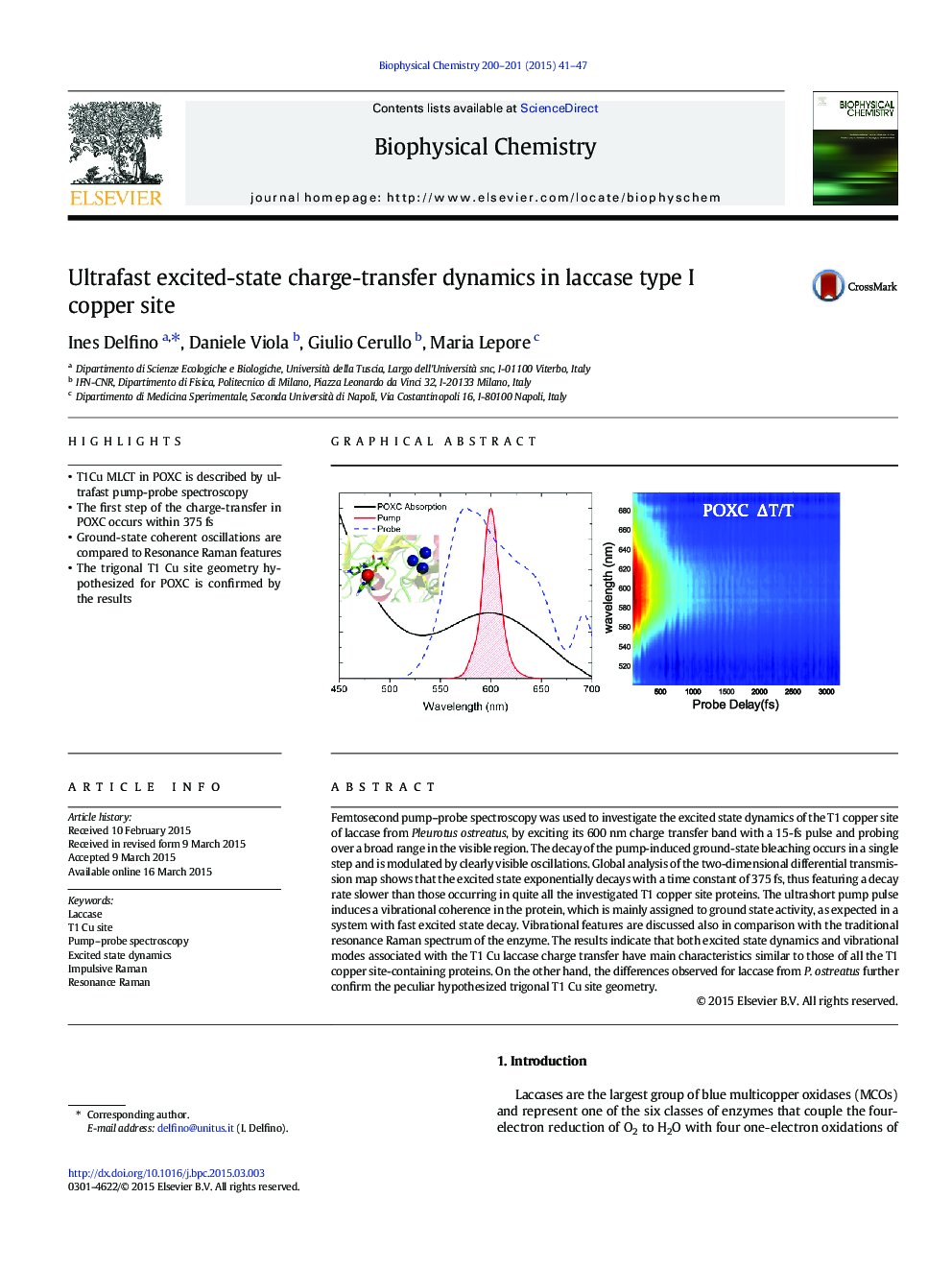| Article ID | Journal | Published Year | Pages | File Type |
|---|---|---|---|---|
| 5370867 | Biophysical Chemistry | 2015 | 7 Pages |
â¢T1Cu MLCT in POXC is described by ultrafast pump-probe spectroscopyâ¢The first step of the charge-transfer in POXC occurs within 375 fsâ¢Ground-state coherent oscillations are compared to Resonance Raman featuresâ¢The trigonal T1 Cu site geometry hypothesized for POXC is confirmed by the results
Femtosecond pump-probe spectroscopy was used to investigate the excited state dynamics of the T1 copper site of laccase from Pleurotus ostreatus, by exciting its 600Â nm charge transfer band with a 15-fs pulse and probing over a broad range in the visible region. The decay of the pump-induced ground-state bleaching occurs in a single step and is modulated by clearly visible oscillations. Global analysis of the two-dimensional differential transmission map shows that the excited state exponentially decays with a time constant of 375Â fs, thus featuring a decay rate slower than those occurring in quite all the investigated T1 copper site proteins. The ultrashort pump pulse induces a vibrational coherence in the protein, which is mainly assigned to ground state activity, as expected in a system with fast excited state decay. Vibrational features are discussed also in comparison with the traditional resonance Raman spectrum of the enzyme. The results indicate that both excited state dynamics and vibrational modes associated with the T1 Cu laccase charge transfer have main characteristics similar to those of all the T1 copper site-containing proteins. On the other hand, the differences observed for laccase from P. ostreatus further confirm the peculiar hypothesized trigonal T1 Cu site geometry.
Graphical abstractDownload full-size image
